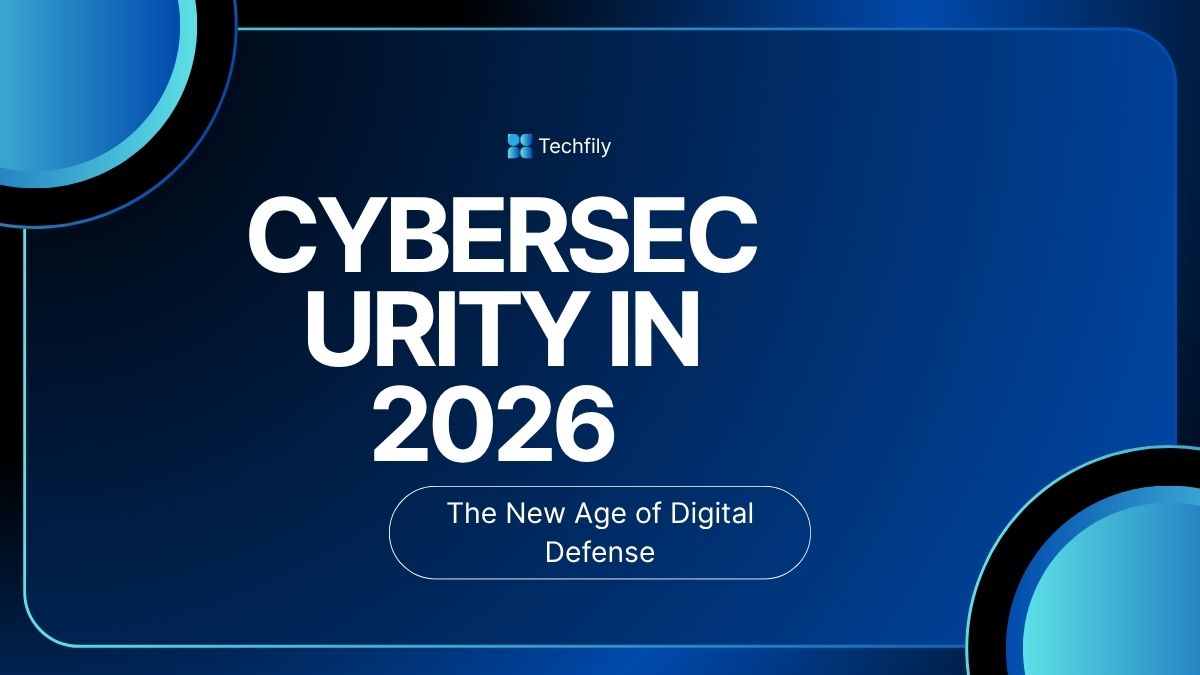Top 7 Cybersecurity Threats to Watch in 2026 (How to Stay Protected)

In 2026, cybersecurity threats will become more AI-driven, targeting cloud data, remote work systems, and personal devices through automation. The biggest risks include AI-powered phishing, ransomware-as-a-service, deepfake fraud, and IoT breaches. Staying protected requires zero-trust frameworks, employee awareness, updated MFA, and consistent cloud security audits.
The Future of Cybersecurity Is Already Here
The digital landscape is evolving at lightning speed. As organizations adopt AI, automation, and hybrid work models, cybercriminals are becoming more sophisticated than ever.
2026 will mark a new era of AI-augmented attacks, blending automation with deception to exploit even the most secure systems.
Let’s explore the seven biggest cybersecurity threats to watch in 2026 — and how you can protect yourself or your business.
1. AI-Powered Phishing and Social Engineering
Artificial Intelligence has transformed phishing into a high-tech weapon. Attackers now use AI tools to craft personalized, grammatically perfect emails and messages that mimic real people or companies.
These scams are becoming harder to detect because AI learns your communication style, tone, and even response timing.
How to protect:
- Use AI-driven email filters that detect behavior anomalies.
- Train employees on identifying suspicious communication patterns.
- Enable multi-factor authentication (MFA) across all systems.
2. Ransomware-as-a-Service (RaaS) Expands
Ransomware attacks are no longer limited to elite hackers. With Ransomware-as-a-Service, anyone can buy or rent malicious software on the dark web and launch attacks without deep technical skills.
In 2026, small businesses will become the primary targets, since they often lack enterprise-level defense systems.
How to protect:
- Maintain frequent offline backups.
- Segment networks to prevent lateral infection.
- Regularly test and update your incident response plans.
3. Deepfake and Voice Cloning Scams
Deepfake technology has evolved beyond video manipulation — it now includes AI-generated voice cloning that can mimic real people perfectly.
Cybercriminals are using it to impersonate CEOs, request wire transfers, or manipulate employees into revealing confidential data.
How to protect:
- Set strict verification protocols for sensitive actions.
- Train teams to spot voice or video anomalies.
- Use biometric and behavioral authentication tools for validation.
4. Cloud Infrastructure Exploits
As cloud adoption skyrockets, misconfigurations remain one of the leading vulnerabilities. In 2026, attackers will exploit cloud identity services and automation gaps to gain unauthorized access.
How to protect:
- Implement zero-trust security architecture.
- Regularly audit cloud permissions and configurations.
- Monitor API endpoints and encrypt data in transit and at rest.
5. IoT and Smart Device Breaches
From smart homes to connected cars, Internet of Things (IoT) devices are everywhere — and they’re notoriously underprotected.
Hackers exploit outdated firmware, open ports, and unsecured networks to infiltrate systems.
How to protect:
- Update device firmware regularly.
- Disable unused features or default admin credentials.
- Place IoT devices on a separate network from sensitive systems.
6. Quantum Computing Threats on the Horizon
While quantum computing is still emerging, it’s already posing a serious cryptographic challenge.
By the late 2020s, quantum processors may be capable of breaking traditional encryption algorithms, making current data protection methods obsolete.
How to protect:
- Begin testing quantum-safe encryption systems now.
- Partner with security vendors preparing for post-quantum standards.
7. Insider Threats Fueled by AI Tools
AI tools can empower employees — but they can also amplify insider risks.
Sensitive data can be accidentally leaked through AI chatbots, cloud tools, or automated systems that store context from user queries.
How to protect:
- Create AI usage policies company-wide.
- Implement data loss prevention (DLP) tools.
- Monitor access logs and revoke unused credentials promptly.
How to Stay Cyber-Safe in 2026
Cybersecurity is no longer just an IT concern — it’s a core business function. To stay protected in 2026 and beyond:
- Build a zero-trust culture across all departments.
- Keep security patches and MFA systems up to date.
- Use AI tools defensively — to predict, detect, and prevent attacks.
- Invest in continuous cybersecurity awareness training.
Final Thoughts
2026 will blur the line between human and machine-led attacks. Organizations that blend AI-driven defense with strong human oversight will have the upper hand.
Cybersecurity success in this new era means anticipating risks before they evolve — and making every click, login, and API call count.
